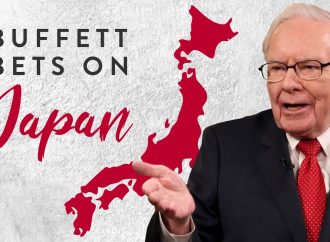Introduction Professional golf has entered a new era. The PGA Tour’s decision to award a $20 million purse at the FedEx St. Jude Championship marks the biggest payday outside the season finale. This staggering shift transforms the Tour’s playoff opener into a true marquee event. No longer just a stepping‐stone to East Lake, this tournament
Introduction
Professional golf has entered a new era. The PGA Tour’s decision to award a $20 million purse at the FedEx St. Jude Championship marks the biggest payday outside the season finale. This staggering shift transforms the Tour’s playoff opener into a true marquee event. No longer just a stepping‐stone to East Lake, this tournament now vies for attention alongside the Masters and the Players Championship. In this article, we explore how this move reshapes the golf calendar, impacts player strategies, and raises the bar for purses across the sport.
A Historic Increase in Tournament Purse
Traditionally, only majors and signature events approached eight‐figure purses. By setting the St. Jude Championship purse at $20 million, the PGA Tour has more than doubled the prize pool of most regular tournaments. The winner earns a share that rivals—if not exceeds—what champions used to receive at historic venues such as Oakmont or Pebble Beach. This nine‐figure commitment underscores the Tour’s financial strength and its willingness to reward top talent handsomely.
Why the FedEx St. Jude Championship?
Memphis’s TPC Southwind has hosted the FedEx St. Jude Championship for years as the opening FedEx Cup Playoff event. Under the new “Signature Event” model, it now carries elevated status:
- It remains a 72‐hole stroke‐play tournament, restoring tradition after experiments with “Starting Strokes” at the Tour Championship.
- The field is limited to the top 70 in the FedEx Cup standings, concentrating star power and heightening competition.
By boosting the purse, the Tour signals that performing well at this playoff‐opener is as critical as any major.
The Return to Traditional Format
Last season’s Tour Championship tested fans with a staggered‐start “Starting Strokes” format. Critics said it confused casual viewers. For 2025, the Tour reverted to classic stroke play at East Lake, and TPC Southwind benefits from this back‐to‐basics approach. Players now compete head‐to‐head from the first tee, making every drive, approach, and putt count in real time. This clarity enhances drama and rewards outright performance.
Star Reactions: Who’s In—and Who’s Out
Shane Lowry, fresh off his Irish Open success, confirmed his participation in Memphis, eager to capitalize on the massive purse and secure his place in the BMW Championship and Tour Championship. Yet not all top players followed suit. Rory McIlroy, second in the standings, shocked fans by skipping the $20 million showpiece without explanation. His absence highlights the tension between player schedules and Tour priorities. Fans and analysts now debate whether top stars will embrace the new format or pick and choose based on personal plans.
Strategic Implications for Players

Image by: Yandex.com
With so much at stake, players must rethink their schedules:
- Season Planning: Top 70 in the FedEx Cup stand to gain more at Southwind than at most signature events. Securing a spot in the field becomes a year‐long goal.
- Risk vs. Reward: Players on the bubble face tough calls—rest up for majors or grind for postop points and money.
- Field Strength: A stronger, deeper field raises the level of play, giving emerging talents a chance to shine under intense pressure.
Winning or placing high at TPC Southwind can vault a player up the FedEx Cup standings and lock in a spot at East Lake with lucrative bonus money on the line.
Economic Impact on Memphis and Beyond
A $20 million purse brings broader benefits:
- Local Economy: Hotels, restaurants, and transport services experience demand surges.
- Charitable Contributions: The FedEx St. Jude tournament supports St. Jude Children’s Research Hospital, amplifying its philanthropic impact.
- Broadcast Ratings: Higher stakes and star‐studded fields attract more TV viewers and sponsorship dollars.
By investing in Memphis, the PGA Tour cements the event’s status as a community fixture and a showcase for the sport’s finest.
How This Move Shapes the Tour’s Future
The Tour’s new pledge to signature‐event rewards signals further changes ahead:
- Increased Prize Equity: Regular events may see purse boosts to keep pace and retain player support.
- Scheduling Shifts: Tournament dates could adjust to ensure top players hit key signature events.
- Global Expansion: The model may extend to international signature events, aligning the Tour with burgeoning markets in Asia and the Middle East.
The $20 million St. Jude Championship serves as a blueprint for elevating Tour offerings and satisfying both players’ financial expectations and fans’ demand for high‐stakes drama.
Fan Experience and Media Coverage
A beefed‐up purse delivers more than bigger checks; it delivers heightened excitement:
- Spectator Draw: Fans flock to Memphis to catch the world’s best golfers competing for record money.
- Concourse Upgrades: Tournament organizers reinvest in fan zones, hospitality tents, and live‐scoring displays.
- Digital Engagement: Social media buzz and real‐time leaderboard apps engage viewers at home, creating viral moments.
Media partners capitalize on the narrative of “highest purse outside majors,” boosting coverage across cable, streaming, and print.
The Broader Golf Ecosystem
Other tours and events take note:
- LPGA Tour: Discussions emerge about raising purses at signature women’s events to close the gender‐pay gap.
- European Tour: Partnerships and co‐sanctioned events may adopt similar models to attract top talent.
- Amateur and Collegiate Circuits: Increased visibility at the professional level filters down, inspiring grassroots growth and sponsorship interest.
The ripple effect of a $20 million purse at a non‐major invites the entire golf community to rethink the economics of the sport.
Conclusion
The PGA Tour’s move to a $20 million showpiece at the FedEx St. Jude Championship marks a bold redefinition of the modern golf calendar. By marrying unprecedented prize money with a return to classic stroke play and a condensed, star‐studded field, the Tour has created an event that commands global attention. Players must adapt their strategies, fans gain richer experiences, and host communities reap economic and philanthropic rewards. As the Tour refines its signature‐event model, the question is not if other tournaments will follow suit, but when—and how high purses will climb next. One thing is certain: golf’s landscape has shifted, and the stakes have never been higher.























Leave a Comment
Your email address will not be published. Required fields are marked with *